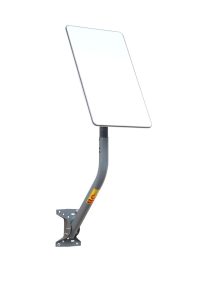MEO Satellites: Revolutionizing Global Communication with Medium Earth Orbit Technology
MEO satellites, or Medium Earth Orbit satellites, are a type of satellite that operates at an altitude of around 2,000 to 36,000 kilometers above the Earth’s surface. This range is higher than Low Earth Orbit (LEO) satellites but lower than Geostationary Orbit (GEO) satellites. MEO satellites are becoming increasingly popular due to their unique advantages, which include faster and more reliable connections, lower latency, and improved coverage.
MEO satellites have been used for various applications, including navigation, communication, and Earth observation. One of the most significant benefits of MEO satellites is their ability to provide global coverage with a smaller number of satellites compared to LEO satellites. This makes them an attractive option for companies looking to establish a global communication network.
How MEO Satellites Work
MEO satellites work by transmitting and receiving signals to and from Earth-based stations. They use a range of frequencies, including Ka-band, Ku-band, and C-band, to provide various services such as broadband internet, voice communication, and data transmission. MEO satellites are typically equipped with high-gain antennas and advanced propulsion systems, which enable them to maintain their orbit and provide stable and reliable connections.
The medium earth orbit of MEO satellites allows them to cover a wide area of the Earth’s surface, making them ideal for applications that require global coverage. They are also less prone to interference from other satellites and terrestrial systems, which makes them more reliable than LEO satellites.
Advantages of MEO Satellites
MEO satellites have several advantages over traditional GEO satellites. One of the most significant benefits is their lower latency, which is the time it takes for a signal to travel from the Earth to the satellite and back. MEO satellites have a latency of around 50-70 milliseconds, which is significantly lower than the 200-300 milliseconds experienced by GEO satellites.
MEO satellites also offer faster data transfer rates and improved coverage, especially in areas with limited or no terrestrial infrastructure. They are also more resistant to interference and jamming, making them a more secure option for sensitive communications.
Applications of MEO Satellites
MEO satellites have a wide range of applications, including navigation, communication, and Earth observation. They are used by various organizations, including governments, military, and commercial companies, to provide critical services such as GPS, satellite broadband, and remote sensing.
MEO satellites are also used for disaster response and recovery, providing critical communication services in areas affected by natural disasters or conflicts. They are also used for environmental monitoring, tracking climate change, and monitoring natural resources.
Conclusion
MEO satellites are revolutionizing the way we communicate globally, offering faster and more reliable connections than traditional GEO satellites. Their unique advantages, including lower latency, faster data transfer rates, and improved coverage, make them an attractive option for companies looking to establish a global communication network.
As the demand for global connectivity continues to grow, MEO satellites are likely to play an increasingly important role in meeting this demand. With their ability to provide global coverage, improved security, and faster connections, MEO satellites are set to transform the way we communicate and access information.


